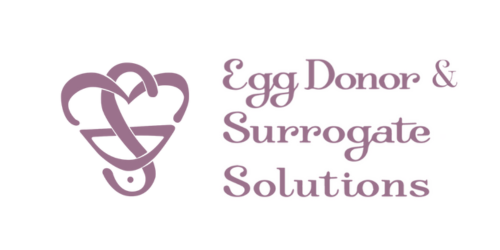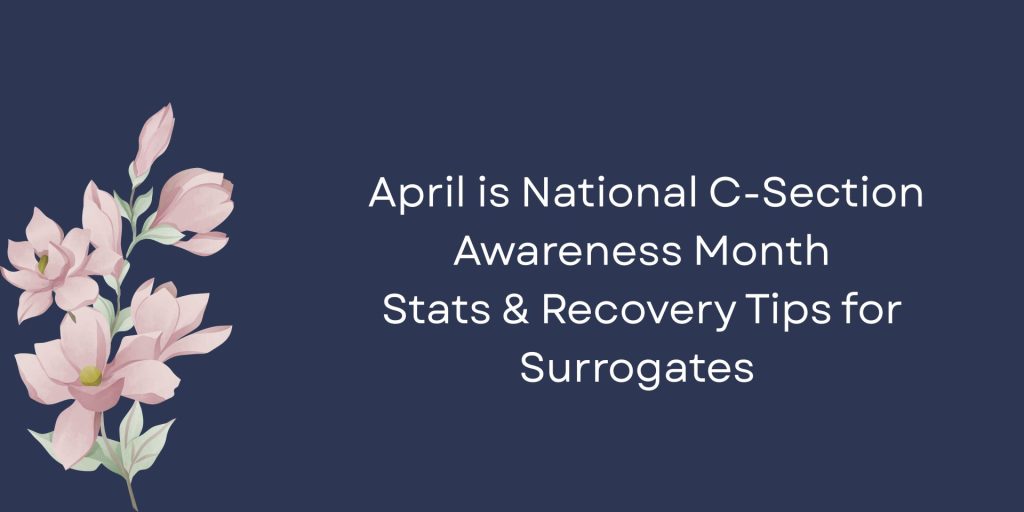Each April, National C-Section Awareness Month shines a light on cesarean births—a vital, life-saving option for many moms and babies. For gestational surrogates, who carry and deliver a baby for intended parents, a C-section can sometimes be part of the journey. Whether it’s a planned procedure or an unexpected outcome, C-section recovery is unique, and supporting surrogates through this process is essential.
Let’s explore the stats, why C-sections might happen in surrogate deliveries, and some recovery tips tailored specifically for surrogates.
📊 C-Section by the Numbers
- 31.8% of all births in the U.S. are by cesarean delivery (CDC, 2023).
- Surrogates may have a slightly higher rate of C-section due to:
- Carrying multiples
- IVF-related pregnancies, which are often considered higher-risk
- Physician caution, especially when caring for a surrogate and intended parents’ embryo
C-sections aren’t negative—they’re often the safest option for the surrogate and baby. But like any surgery, they come with a recovery process that deserves care, compassion, and planning.
🤰 Why a Surrogate Might Need a C-Section
Even with a healthy pregnancy, certain factors make C-sections more common in surrogacy:
- Repeat C-section: Some surrogates have had a prior cesarean, and many OBs recommend repeat C-sections for safety.
- Placenta positioning: IVF pregnancies are slightly more likely to result in placenta previa, which often requires surgical delivery.
- Multiple embryos: If a surrogate is carrying twins or triplets, C-section is often the safest route.
- Intended parents’ preferences (in consultation with OB): Some IPs and surrogates may agree to a planned C-section to allow for coordination and minimize uncertainty.
💛 Surrogate-Specific Tips for C-Section Recovery
- Set Up Your Village
Surrogates need a solid postpartum plan. Whether it’s a partner, family, or agency support, help with meals, childcare, and emotional check-ins is key during the first few weeks. - Rest Without Guilt
Post-surgery recovery isn’t just physical—it’s emotional, too. Healing can take 6–8 weeks or more. Don’t rush. Your body just did something extraordinary! - Stay on Top of Pain Management
Communicate with your OB about pain levels. Take medications as prescribed and don’t “tough it out.” Staying ahead of discomfort helps you heal more smoothly. - Support the Emotional Journey
Surrogates don’t go home with a baby, but they still experience hormonal shifts, exhaustion, and recovery. Partner with a therapist, counselor, or support group familiar with surrogate experiences. - Fuel Your Body Well
Nourishing foods help the body heal from surgery. Prioritize protein, whole grains, fruits, and vegetables. And yes—stay hydrated! - Start Moving—Gently
Short walks (even just around the house) reduce the risk of clots and support circulation. Avoid lifting anything heavier than a gallon of milk for the first few weeks. - Use a Belly Binder if Approved
Some surrogates find comfort in abdominal binders for added support. Ask your doctor before using one.
🌈 Intended Parents: How You Can Support Your Surrogate
- Check in often. A simple text saying, “Thinking of you—how are you feeling today?” means the world.
- Respect her boundaries. Every surrogate processes delivery differently—some love updates and visits, others need space. Follow her lead.
- Show appreciation. A handwritten note, a postpartum care box, or a thoughtful gift card can go a long way.
- Plan a recovery fund. If not already built into your agreement, consider gifting extra help for meals, massage therapy, or counseling.
💬 Final Thoughts
C-sections are major surgery—and when experienced by a surrogate, they deserve just as much recognition, gratitude, and support as any other delivery. Whether this was your surrogate’s first or fourth delivery, recovering from a C-section takes strength, patience, and care.
This April, let’s not only raise awareness about cesarean birth—but let’s also celebrate and support the amazing women who give the ultimate gift through surrogacy, one birth at a time.

